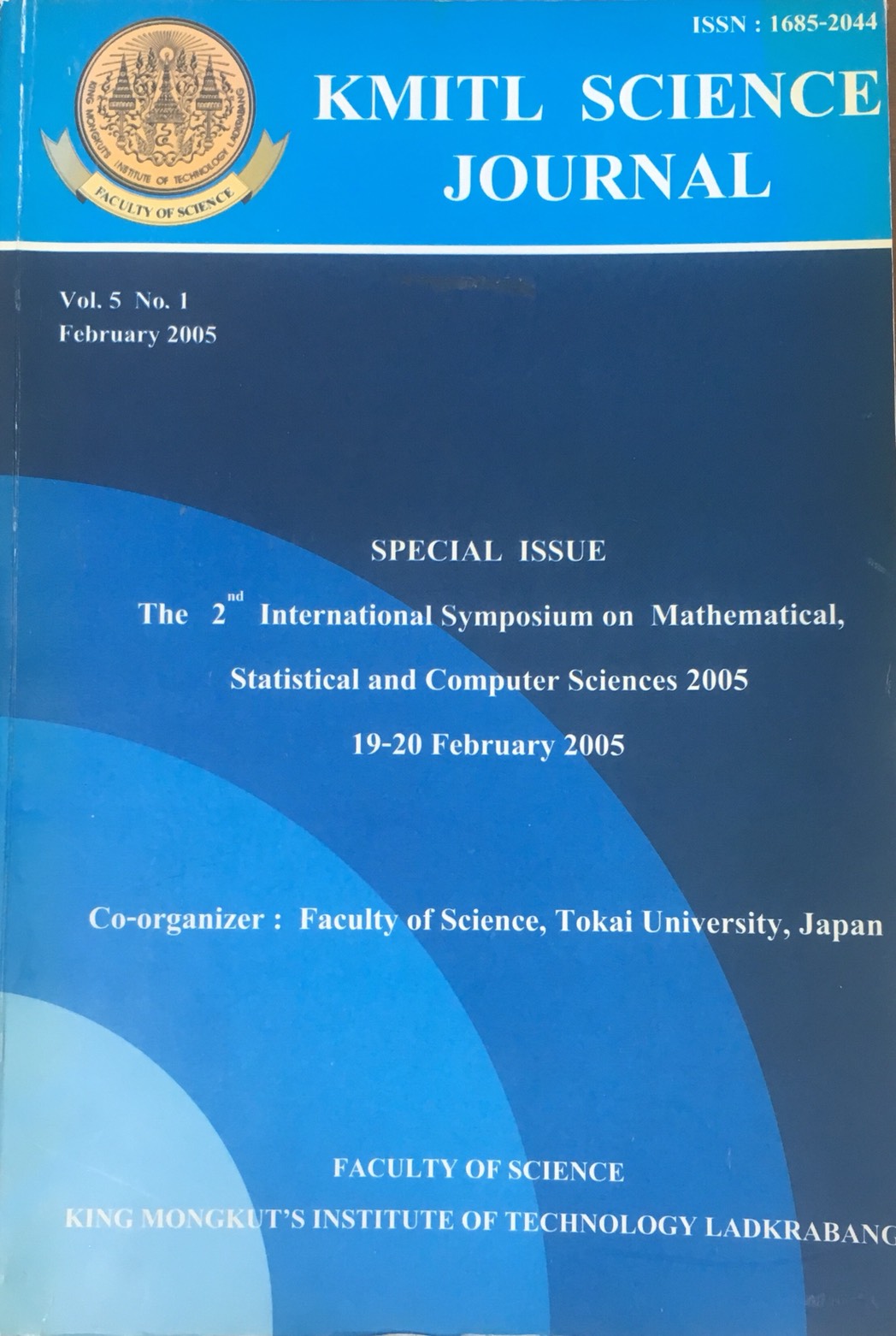A Study of the Nelder and Mead Modified Simplex Method with the Second-Order Designs on Uni-and Dual- Response Systems
Main Article Content
Abstract
Modified simplex method (MSM) is a method for finding the optimal conditions of industrial processes. In general, this approach will research for the proper conditions under a consideration of a uni-response system, an average of process yields. However, the uni-response system may not be valid when the variance of yields is not constant. This research concerns a dual-response system, with both average and variance of responses. The objective of this work is to compare the efficiency of the MSM with the completion of the central composite and hexagon designs on various systems for determining the optimal values of a process in the presence of noise. On both uni- and dual-response systems, the average of actual responses and the average of distance between true optimum point and estimated optimum point are not significantly different when compared. However, the average of standard deviation of actual responses from the MSM with the central composite design seems to be worse. In summary, the optimization strategy of the MSM based on hexagon design leads to the better condition with fewer experimental trials whilst searching for the maximum.
Keywords: uni response, dual response, optimization strategy, modified simplex method, hexagon
Corresponding author: E-mail: Ipongch@engr.tu.ac.th
Article Details
Copyright Transfer Statement
The copyright of this article is transferred to Current Applied Science and Technology journal with effect if and when the article is accepted for publication. The copyright transfer covers the exclusive right to reproduce and distribute the article, including reprints, translations, photographic reproductions, electronic form (offline, online) or any other reproductions of similar nature.
The author warrants that this contribution is original and that he/she has full power to make this grant. The author signs for and accepts responsibility for releasing this material on behalf of any and all co-authors.
Here is the link for download: Copyright transfer form.pdf
References
[2] Box, G.E.P. 1957. Evolutionary Operation: a Method for Increasing Industrial Productivity, Applied Statistics, 6, 81-101.
[3] Box, G.E.P. and Draper, N.R. 1969. Evolutionary Operation A Statistical Method for Process Improvement, John Wiley, New York.
[4] Montgomery, D.C. 2001. Design and Analysis of Experiment (5th ed.), John Wiley, New York.
[5] Brooks, S.H. 1959. A Comparison of Maximum-Seeking Methods, Operations Research, 7, 430-457.
[6] Brooks, S.H. and Mickey, M.R. 1961. Optimum Estimation of Gradient Direction in Steepest Ascent Experiments, Biometrics, 46, 48-56.
[7] Montgomery, D.C. and Evans, D.M. 1975. Second-order Response Surface Designs in Computer Simulation, Simulation, 25, No.6, 169-178.
[8] Myers, R.H. and Carter, W.H. 1973. Response Surface Techniques for Dual Response Systems, Technometrics, 15, 301-317.
[9] Vining, G.G. and Myers, R. H. 1990. Combining Taguchi and Response Surface Philosophies: A Dual Response Approach, Journal of Quality Technology, 22, 38-45.
[10] Del Castillo, E. and Montgomery, D.C. 1993. A Nonlinear Programming Solution to the Dual Response Problem, Journal of Quality Technology, 25, 199-204.
[11] Lin, D.K.J. and Tu, W. 1995. Dual Response Surface Optimisation, Journal of Quality Technology, 27, 34-39.
[12] Luangpaiboon, P. 2000. A Comparison of Algorithms for Automatic Process Optimisation, Ph.D. Thesis Newcastle upon Tyne, UK.
[13] Spendley, W., Hext, G.R. and Himsworth, F.R. 1962. Sequential Application of Simplex Designs in Optimisation and Evolutionary Operation. Technometrics, 4(4), 441-461.
[14] Nelder, J.A. and Mead, R. 1965. A Simplex Method for Function Optimisation. Computer Journal, 7, 308-313.
[15] Arnholt, A.T. 1993. Optimising Three-dimensional Surface with Stochastic Error Distribution. Public Doctor of Philosophy Dissertation, University of Northern Colorado.
[16] Vajchalaphong, M. 2002. Bi-Criteria for Response Surface Methodology: A Comparison between Central Composite and Hexagon Designs, Master Thesis, Thailand.


